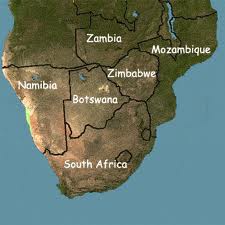Like most things in colonial Southern Africa, interracial marriages were seen but not heard. The history of interracial marriage has always been an interesting one. In Africa in particular ever since the European man set foot on the continent he was mesmerized not only by the vast landscape and the Serengeti but by the African woman. It was one of those situations where in some cases the women were raped by these Euro-colonialists who could not satisfy their savage instincts.
Most of the European colonialists forced themselves upon the young and vulnerable beautiful African girls who had children who came to be known as “coloureds”. The “coloureds” became a race on their own for the purposes of segregation. In British colonies they were second class citizens. During the colonial times the Euros got most of the privileges because they were the “first class” citizens. The “coloureds” were “second class” enjoying some of the privileges of their Euro fathers and indigenous Africans were third class citizens.
The term coloured was mostly used in countries like Namibia, South Africa, Zimbabwe, Zambia and Botswana.
During colonialism the “coloureds” got positions usually as secretaries and mechanics. This was at a time when Africans worked as teachers, clerks, nurses and janitors or engaged in menial labor jobs. Indigenous Africans viewed them through the lens that most Americans view African-Americans. Common stereotypes were that they did not like to work or that they were uneducated and had children out-of-wedlock.
The onset of independence brought about change for the indigenous African who had all kinds of opportunities at their fingertips. This was not always the case for “Coloureds”. They still struggle to find their voice in post colonial Africa.





One response to “History of Interacial Relationships in Southern Africa”
This is interesting to see how race is viewed in other parts of the world. We believe that America is the most race conscious country in the world so its eye opening.